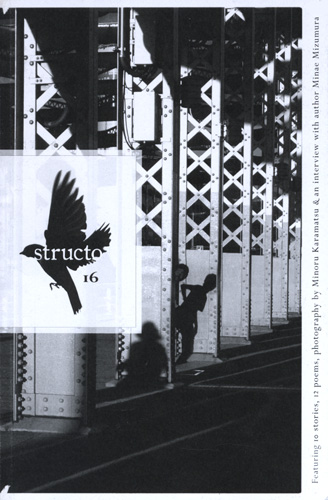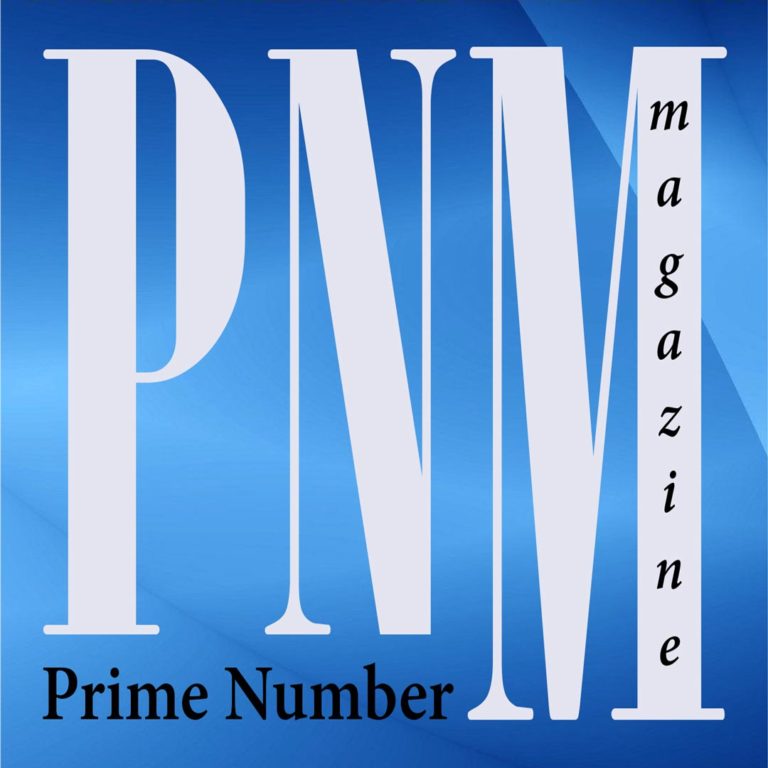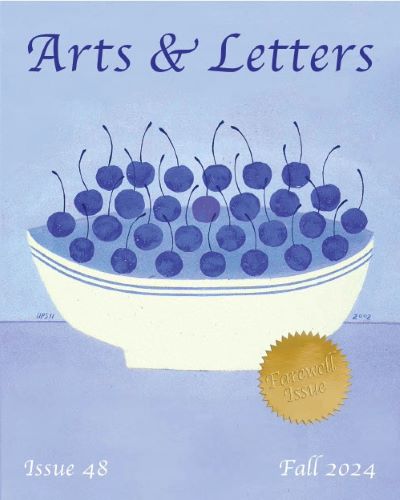Structo – Autumn/Winter 2016
The Autumn/Winter 2016 issue of Structo offers readers a fun read while bringing global voices together in one publication.
The Autumn/Winter 2016 issue of Structo offers readers a fun read while bringing global voices together in one publication.
A most peculiar and, therefore, fascinating story in the British literary magazine Structo is “Empty Air” by Richard Smyth. The narrator, James, is a widower who feels compelled to climb the outsides of buildings after dark to reach clock towers: “When you look up at a tall tower on a windy day the sweeping motion of the cumulus above can make you dizzy—convince you, almost, either that the tower is falling, or that you are.” After one nightly climb, James thinks, “I started all this because I wanted the clocks to tell the right time, from a simple sense of rightness, of proper order. And now none of them tells the right time, and it’s all my doing.”
Other stories trace themes involving medical professions. Psychologist and writer J.L. Cooper focuses his fiction, “The Couple That May Still Live on Maple Street,” on counseling a couple about their failing marriage. Gwen Sayers’s “Night Shift” plants the reader at 3 a.m. with Fran, a doctor treating drug addicts. Fran’s “need for sleep numbs her brain, making her thoughts bump into each other and wander off before she can fully think them.”
Still in the medical element, I was especially taken with Steve Leckie’s “The Day Joe Strummer Died,” Strummer having been lead singer of The Clash. The story’s protagonist works in a psychiatric unit. On the Monday before Christmas, Toby, a repeat drug user, is in the ward again after an ultimatum to get clean. “[ . . . ] I’m sorry,” he’s told, “but you’ve really left me no alternative but to discharge you from the service.” And then, “I can see from his face that [Toby’s] just heard the bulletin; his expression is a mirror of my own, and our eyes meet.” I won’t give away the ending.
Prose in Structo pauses for Natalie Raymond’s cutaway diagram of a man’s face marked by words like “emptiness,” “familial sound,” and “visceral intuition.” She titles it “Diagram of My Father’s Voice,” and I interpret it—right or wrong—as graphic poetry.
More standard forms of poetry include the late Bhaskar Chakraborty’s “In Memory of Jibanananda Das,” translated from Bengali by Manash ‘Firaq’ Bhattacharjee. To put the poem in context, Das was a beloved Bengali poet and writer, born in 1899, who died days after being hit by a tramcar in 1954, “apparently ending his life by suicide.” Chakraborty reconstructed Das’s death with lines like these:
Tramline to tramline, today everyone is looking for him
Delicate, sparkling, wiped
And washed – after a hundred years the house he lived in
Becomes national property.
Another translation, “Coup De Theatre or ‘Slaughterhouse Five,’” written by Ludwig Steinherr and translated from German by Richard Dove, has us with a woman in labor during a time of war:
Headlong and helpless
we tried
to calm
the thrusting arms and legs
the racing heart
beneath yours
Maximilian Heinegg closes the magazine with his poem “The Interim”:
[ . . . ] I watch the sky
like an augur,
curl my eyes round
clouds’ contours,
follow a black stream of birds,
reading omens
in swirling ashtrays.
In another section of Structo, Minoru Karamatsu of Osaka, Japan, shows us a series of photos worth studying. They’re mostly of people, but the photo of dozens of white gloves, some quite soiled, clipped onto wires, held my attention.
A special highlight of the issue is an interview with Minae Mizumura about her book The Fall of Language in the Age of English. She starts off saying that the dominance of English is not “bad in itself, because there has to be a universal language.” But her point is that the amount of literature written in Japanese is declining.
She says, “I’m not aware of a country which has such a long literary tradition that is as unthinking as Japan about cherishing their written language.” After World War II and the American occupation, “Americans thought we should break away from our past which they thought was awfully medieval, and we eagerly did as told. They actually even wanted us to get rid of the Chinese characters—and we nearly did so.” Mizumura’s book was published in Japanese in 2008 and translated into English in 2015.
For more fresh takes on literary works being published outside the U.S., find a copy of Structo. It’s not only fun, but may instill in you new ways to approach your own literary reading and writing.





